How to Be an Authentic Eco-Traveler
20 Essential Green Travel Tips
by Victor Paul Borg
Updated 3/30/2024 by Transitions Abroad
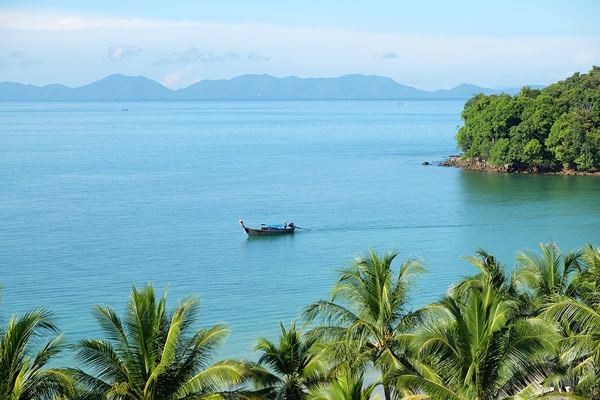
|
|
Rowing a boat is a form of eco-travel that is climate-friendly and relaxing.
|
Rowing a boat is a form of eco-travel that is climate-friendly and relaxing.
On the face of things, most businesses in the travel industry now display some environmental concerns. Most tour operators currently profess their environmentalism, implicitly and explicitly, by offering tours or adventure activities in natural areas such as nature reserves and national parks, especially in developing countries, based on the premise that tourism provides an incentive for locals to make money by protecting their land, as opposed to destructive activities such as logging, fish farming, poaching, or mining. Many internationally owned resorts are falling all over themselves to prove their green credentials; they devise ways to minimize waste and electricity usage, and many upscale vacation retreats now levy a dollar or two for every guest's overnight stay and donate it to environmental programs. As a travel writer specializing in outdoor travel to natural areas, I constantly research these efforts.
Yet, I am also able to see that what some travel businesses dabble in is, in fact, at times disingenuous. Their efforts often have more to do with publicity than genuine concern. Some make untrue claims or exaggerate their actions, and gimmickry is more common than it should be, given that so much tourism income is at stake. To be fair, local opportunists exist. Human nature is what it is. Still, this practice is especially the case with international chains or upscale resorts, who often use their financial and prestigious clout to get permits to build their commercial retreats in natural landscapes — then profess to do something in the name of the environment. For example, recently I went to check out a new commercial vacation spot along a pristine beach north of Phuket in Thailand. The resort donates a lot of money annually to protect turtle-nesting beaches about 40km (24 miles) up the coast from where it's situated. This is commendable, but the resort omits to say that the beach where it is located also used to be a turtle-nesting beach, but its very construction — and others that followed it — scared away the turtles. So, if the vacation retreat had not been built on a pristine beach in the first place, there would be more nesting turtles. I could list dozens of hypocritical cases such as this.
Even some prominent guidebook publishers are exploiting the current trend in favor of green travel to make money. In fact, colorful guidebooks about natural places, especially destinations linked to global warming and environmental ruin, have proven to be best-selling guidebooks in recent years. Some publishers have also created and promoted guidebooks to "exotic and unique" places you can see before they disappear due to global warming and environmental degradation (such as shrinking lakes, expanding deserts, melting glaciers and icebergs, and so forth). These guidebooks have in common that they encourage the kind of energy-intensive travel that is often part of the problem rather than a solution. Such promotion of shallow travel to areas that are under threat actually helps exacerbate the global warming and environmental damage that will hasten the disappearance of these places.
Imagine if we were honest with ourselves as travelers. In that case, we have to concede that travel for leisure is indeed one of the most environmentally destructive activities, and commercial jet air flights significantly contribute to global warming. In Switzerland, a project calculated that to achieve sustainability, each person on earth should use only 2,000 kilowatts of energy a year (in the U.S., people use more than an average 10,900 kilowatts annually). A journalist once asked two of the project's directors if they had achieved the target of 2,000 kilowatts annually. One replied: "I'm very close except for this stupid air travel." Another director said: "Let's skip that question about my travels."
So You Want to Live in the Most Responsible Way?
First, Stop Traveling! But since none of us is going to give up travel — I would be out of work if people stopped traveling — then the next best thing that we can do, as individuals, is to make careful choices to minimize our environmental and social impact. By making reflective, common sense, and sensitive choices, we will lessen our impact as travelers and hopefully foster the kind of climate that will incrementally lead to the search and implementation of more progressive environmental solutions. At the same time, you can enjoy your travels as you should by realizing that you are not trampling on delicate and beautiful flowers.
Here is a rundown of 20 simple and practical suggested measures that you can adopt during your travels to minimize your environmental footprint:
1. Avoid Greenwashers
Do not be tempted to be hypnotized by the many colorful guidebooks or web posts about places to see before you die (aka the ubiquitous "bucket lists"), places to see before they disappear, and the best adventures to be had in the world — you will never have the chance to experience them all before you physically leave this world anyway. These guides often promote the brash and shallow globetrotting that has a substantial adverse environmental impact on the planet. Likewise, do not stay in resorts or use businesses that are flagrant greenwashers.

|
|
These animal hosts know an eco-friendly visitor when they see one as they graze in the wild.
|
2. Use Guidebooks, But Only as a Starting Point
Guidebooks are not sacred texts and do not always feature the more sensitive and exciting ways to experience a destination; with a few notable exceptions, they are often inaccurate, sparse, and clichés. You frequently need to read or lug about several expensive guidebooks or ensure your smartphone or tablet is always charged to get a broad and accurate picture. If you enjoy quality guidebooks, you can often best use them as a starting point and research tools before your travels and then make personal discoveries. And, if you are visiting one small region within a country, do you actually need guidebooks? You can use online sources for travel research and planning these days, and although it takes more time to search and navigate online, it is free. An added bonus is that by the time you complete your research, you have practically memorized what you will see and do at the destination and how you will get there.
3. Support Local Businesses
Stay in small inns/B&Bs and farm stays, homestays, rentals, and localized accommodations run by locals — as opposed to international hotel chains — and eat in the same restaurants locals enjoy. Finding a homestay is more rewarding to you and your hosts than staying in a chain hotel. Likewise, if you join a tour or go scuba diving with a diving center, lean towards small local companies, all things being equal. That way, your money goes into the pockets of residents instead of being siphoned away by ever-growing business empires with central profit centers and often disinterested shareholders.
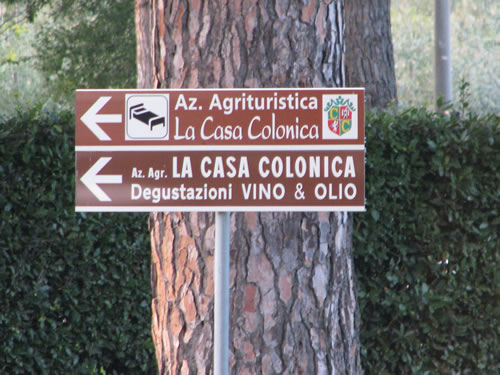
|
|
Farm stays are generally a better way to stay when being an eco traveler, which is why agriturismos are popular in Italy.
|
4. Turn Off the Power When Possible
When you stay at most accommodations, you are often not paying the electricity bill. Still, you will do the atmosphere a big favor if you studiously turn off all power before you go out. Try to not only switch off the lights but also unplug any appliances such as TVs, laptops, electric chargers, and so on, which continue to drain a small amount of power while on standby.
5. Use Businesses that Can Prove Green Credentials
Many tourist businesses make extraordinary claims regarding contributions and care for the environment these days. Do not automatically believe them — you'll be amazed how many hotels or resorts turn out to be, at best, disingenuous about their green credentials. Look for something, some independent certification, that proves their claims. Then, still do your due diligence, as no watchdog organization is immune to corruption or oversight.
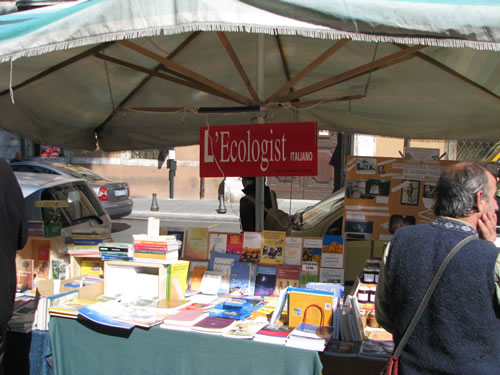
|
|
Italy has a great interest in ecology and forms of sustainable travel.
|
6. Engage Businesses Incorporating Green Ethics
Businesses listen to their customers. If you very respectfully point out an issue to a business operator that is harming the earth or suggest something they should be doing, then that will set the business operator thinking, and the business might change its ways — if only out of fear of losing potential customers or the potential of attracting more customers.
7. Eat and Enjoy Local Food
Try to eat and enjoy dishes prepared from ingredients sourced locally. Such local food almost inevitably tastes much better. This philosophy is part of the Slow Food movement towards enjoying traditional dishes. It does not matter what kind of food is used so long as ingredients are sourced locally and have yet to be transported across great distances. At the same time, be mindful of what you are eating — you might unwittingly order an animal or fish that is endangered and illegally caught — and avoid exotic ingredients that require intensive farming to be locally cultivated because they are outside their optimal climate.
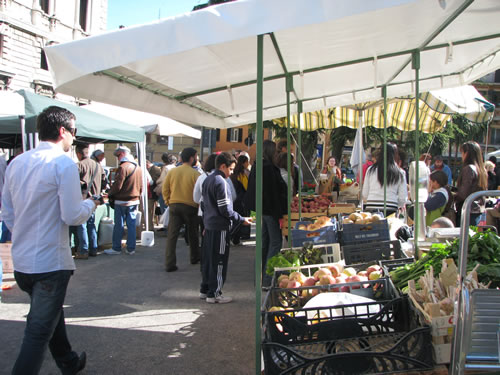
|
|
Shopping at local markets supports green living.
|

|
|
Create regional foods such as Bruschetta in Italy from ingredients found at the market.
|
8. Use Public Transportation
Wherever possible, opt for public transportation instead of a taxi or a rental car. Take a bus or train instead of flying; travel in buses and ferries wherever possible — it is cheaper, kinder to the earth, and you will have a chance to meet with ordinary people while perhaps even learning more of the local language.
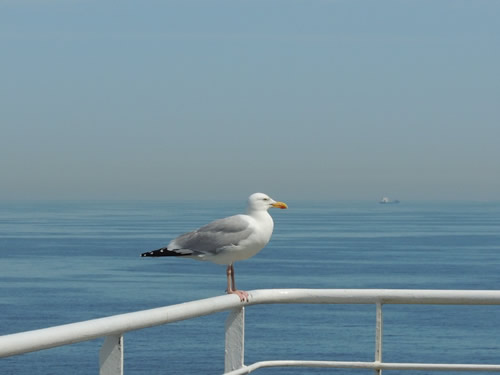
|
|
The seagull travels on busy public ferries.
|
9. Use your Body’s Power When Possible
Instead of taking a taxi, bus, or boat, you can walk, cycle, or kayak. You will see things better that way, soaking in your surroundings more fully. You also lessen carbon dioxide emissions, and you will even do yourself a favor by moving your sedate body a bit.
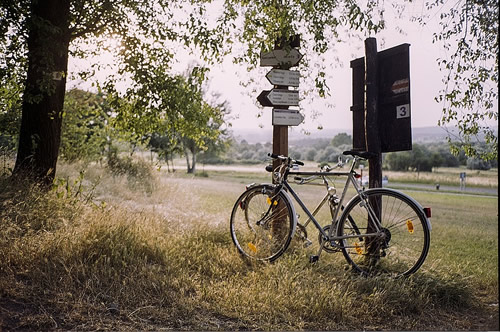
|
|
Biking is a healthy form of eco-travel.
|
10. Pool with Fellow Travelers
Assume you plan to visit somewhere off the beaten track and need a private vehicle. In that case, try to find other travelers and organize a group that fits within a car (electric or hybrid is preferable and more common) — it will work out to be cheaper and easier on the earth regarding emissions per person. In some places, there is an established tradition of travelers pooling together to organize trips; this is popular in Australia, where travelers put up notices on message boards in hostels or websites.
11. Try Not to Travel Large Distances
If you plan a trip to a large country such as China or India, try to see only some of the country in one trip. By hopping around so much, you would have to fly, and that constitutes the largest impact of travel on the environment. Besides, you will generally gain a superficial view of the country if you are constantly moving; it is better to stay within one region and experience it well, practice slow travel, and leave other regions within the same country for other future visits.
12. Try to Leave Wildlife Alone
Do not chase birds or animals for a closer look or to get close enough to take pictures. The stress on wildlife can be devastating, forcing the animals to flee or even vacate particular areas; additionally, if the bird or animal is nesting or raising young at the time, your disturbance can make the difference between whether the young or hatchlings survive. Carry binoculars, and keep your distance. And do not feed wildlife; it distorts the natural process.
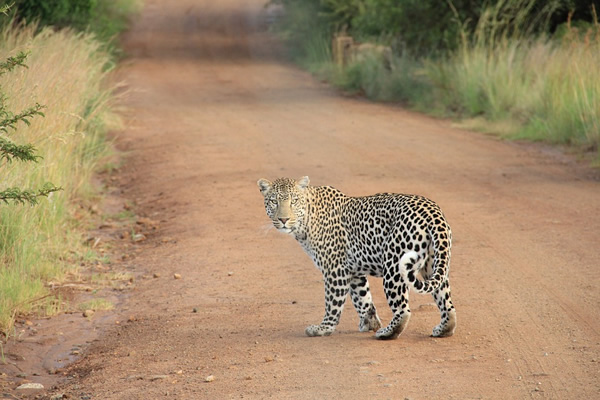
|
|
Leaving a tiger alone in the wild is a wise form of eco-travel for your own sustainability as well!
|
13. Keep Within Trails
If you are trekking, do not veer off the trail and trample about. Keep within the trail; that way, the impact is at least contained.
14. Steer Clear of Coral Reefs
Substantial coral reefs are saved from unscrupulous fishing but sometimes unintentionally disturbed by snorkelers and scuba divers. If you are snorkeling or scuba diving, do not touch the coral; keep a certain distance to avoid unwittingly hitting the coral with your thrashing feet. Additionally, do not feed the fish.
15. Try a
Reusable
Cloth Bag
You can save a lot of plastic bags if you use a cloth bag instead, tucked in your day bag or backpack, and use it every time you need to pop into a shop to buy something. Then, in your main bag, carry a dozen small bags or reusable containers to separately pack different things you have that should not mix.
16. Use a Refillable Flash for Water
Instead of buying a bottle of water each time you are thirsty while walking or traveling, you can refill a camping flask (or use water purifiers) before you leave your accommodations or stop for lunch or dinner at a restaurant. Accommodations and restaurants usually have sources of water, and you can refill for free if you are their customer.
17. Be Selective About Souvenirs
Do not shop for souvenirs on impulse or out of excitement aroused in your exotic locale before thinking about whether you will use the souvenir in the long term. Most souvenirs end up in a storage room. It would help if you strived to buy only things you will use when you return home and once their novelty has worn off. Some still use a branded corkscrew from a winery where they have had a tasting, for example. Others decorate their living space when they return home with local crafts they have collected during their trip, etc.
18. Be Mindful of the Composition of Products
Some products appear harmful at face value — for example, carvings made from dead wood trees, wind chimes made from sea shells, or bits of dead coral. But these are not harmful; dead coral is a medium on which certain organisms thrive, and so are empty shells. On the other hand, in natural forests, up to 40 percent of the biomass is found in dead wood. Buying artifacts made of dead wood may remove an essential medium from the natural process; by scavenging the woods, local artisans might unintentionally be disrupting the ecosystem.
19. Postcards are Obsolete
Instead of sending paper postcards, use the power of technology to make a phone call, Zoom/Skype, send an email, Instagram, take photos, or create an e-postcard.
Even then, it is likely best not to be addicted or tied to electronic devices like an umbilical cord, as electricity has to be generated and used somewhere along the route.
20. Pack Light
Last but not least, strive to travel as light as possible. It will be easier on your back; your luggage needs less fuel-burning to be transported and takes less space in a vehicle. Remember: the tendency is to over-pack, as you throw in that extra pair of pants or skirt just in case. Be as uncompromising as possible — if you are unsure whether you will use something, leave it out. Can a small towel suffice for a holiday of two weeks? Are you really going to use your laptop on the road, or will you end up carrying a laptop halfway across the world to use just twice in two weeks? Alternatively, will you be on your laptop so much that you might not fully enjoy and directly immerse yourself in the worlds you are visiting on your eco-travels?
Victor Paul Borg is an experienced travel writer.
|
